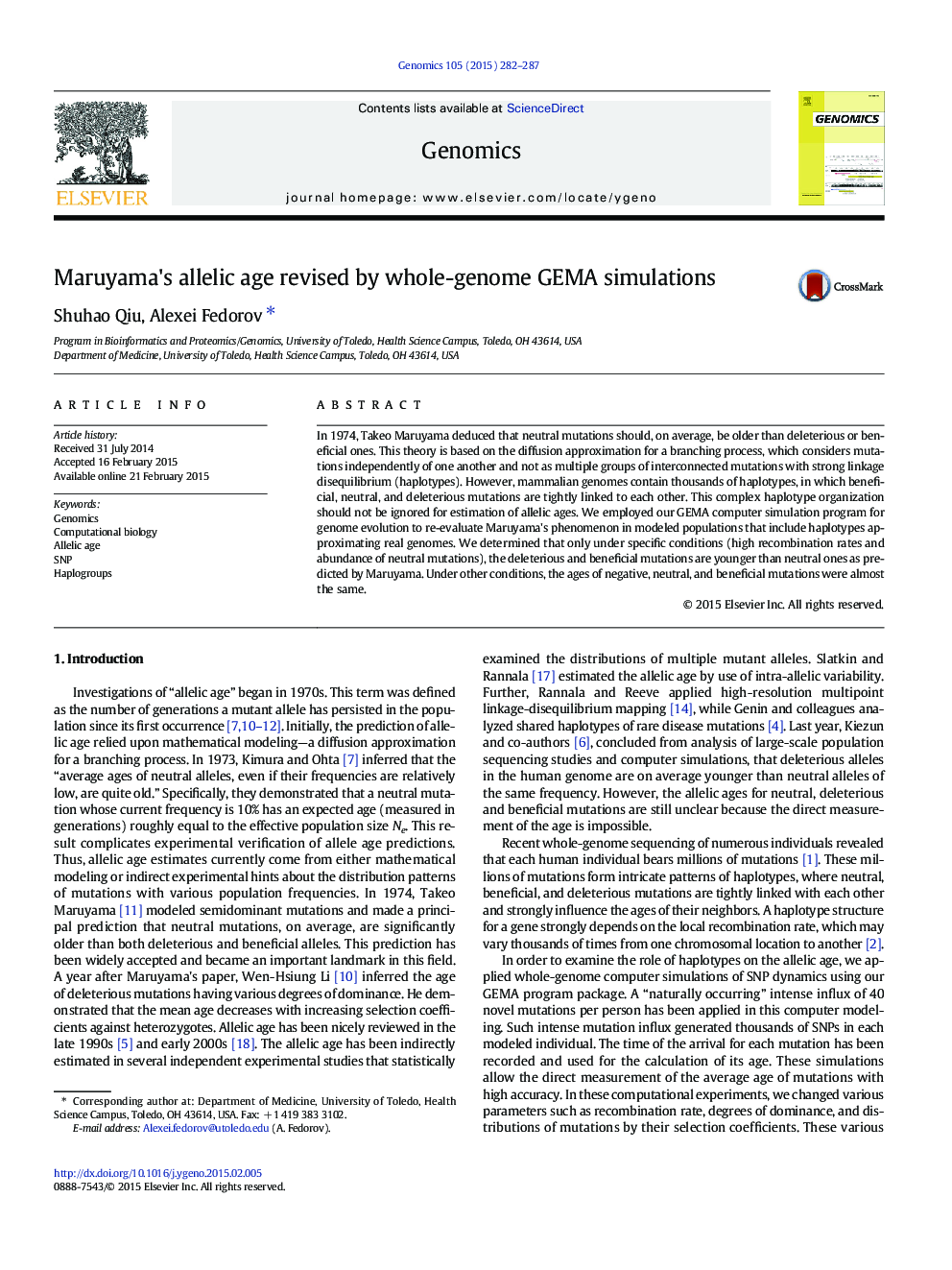| Article ID | Journal | Published Year | Pages | File Type |
|---|---|---|---|---|
| 5907845 | Genomics | 2015 | 6 Pages |
Abstract
In 1974, Takeo Maruyama deduced that neutral mutations should, on average, be older than deleterious or beneficial ones. This theory is based on the diffusion approximation for a branching process, which considers mutations independently of one another and not as multiple groups of interconnected mutations with strong linkage disequilibrium (haplotypes). However, mammalian genomes contain thousands of haplotypes, in which beneficial, neutral, and deleterious mutations are tightly linked to each other. This complex haplotype organization should not be ignored for estimation of allelic ages. We employed our GEMA computer simulation program for genome evolution to re-evaluate Maruyama's phenomenon in modeled populations that include haplotypes approximating real genomes. We determined that only under specific conditions (high recombination rates and abundance of neutral mutations), the deleterious and beneficial mutations are younger than neutral ones as predicted by Maruyama. Under other conditions, the ages of negative, neutral, and beneficial mutations were almost the same.
Related Topics
Life Sciences
Biochemistry, Genetics and Molecular Biology
Genetics
Authors
Shuhao Qiu, Alexei Fedorov,
